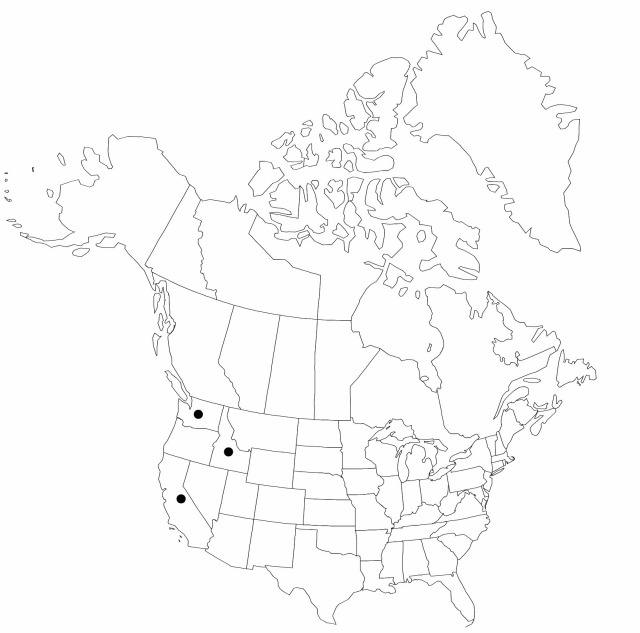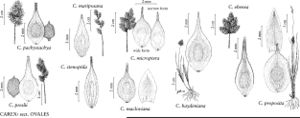Carex proposita
in N. L. Britton et al., N. Amer. Fl. 18: 126. 1931.
Plants densely cespitose. Culms 10–35 cm. Leaves: sheath adaxially white-hyaline, summits U-shaped; distal ligules 0.9–2 mm; blades 2–4 (–5) per fertile culm, occasionally folded, 6–20 cm × (0.5–) 1–2 (–2.5) mm, if not folded, margins revolute. Inflorescences dense or open, gold to dark-brown, 1.7–3 cm × 11–18 mm; proximal internode 4–8.6 mm; 2d internode 1.5–3.5 mm; proximal bracts usually scalelike or bristlelike, occasionally leaflike, shorter than inflorescences. Spikes 3–6, distant to loosely aggregated, distinct or individually indistinct, broadly ovoid, 10–15 × 7–9 mm, base acute to attenuate, apex rounded. Pistillate scales gold or reddish to dark-brown, with pale midstripe, lanceolate to ovate, 3.5–4.8 mm, usually shorter than and 1/3–1/2 width of perigynia, margin white, 0–0.2 mm wide, apex obtuse to acuminate. Anthers long-persistent. Perigynia ascending to spreading, gold to coppery; conspicuously 3–11-veined abaxially, conspicuously 0–13-veined adaxially, broadly ovate, usually flat, 4.3–6.3 × 2–3 mm, 0.25–0.5 mm thick, margin flat, including wing 0.4–0.9 mm wide, edge often minutely crinkled; beak redbrown or brown, usually white-hyaline at tip, cylindric, unwinged, ± entire for (0.3–) 0.5–0.9 mm, ciliate-serrulate at least on distal body, abaxial suture inconspicuous or with conspicuous white margin, distance from beak tip to achene (1.9–) 2.2–3.7 mm. Achenes elliptic, 1.5–2.1 × 0.75–1.1 (–1.3) mm, 0.25–0.5 mm thick.
Phenology: Fruiting summer.
Habitat: Montane and rocky places
Elevation: 2400–4100 m
Distribution

Calif., Idaho, Wash.
Discussion
Selected References
None.
Lower Taxa
"shortened" is not a number."+timesaslongasinflorescences" is not declared as a valid unit of measurement for this property."not undefined" is not a number."/3widthofperigynia" is not declared as a valid unit of measurement for this property.
